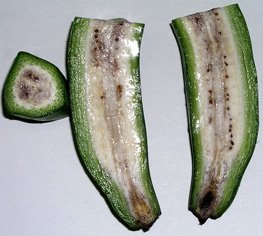From André Heitz.
Ethiopia is one of the frontrunners in the use of Intellectual Property to make the best use of its plant genetic and traditional knowledge assets. In the absence of legislation on geographical indications, it has endeavoured to use collective trade marks in the main export markets to add value to its Sidamo, Yirgacheffe, and Harrar/Harar coffees. There is more on the Ethiopian Coffee Trademarking and Licensing Initiative at the Ethiopian Coffee Network and Light Years IP.
The Ethiopian Parliament is now expected to pass geographical indications legislation later this year. This will then provide the legal basis for Ethiopia’s plans to register geographical indications protection, first nationally and then abroad, over emblematic home garden products like coffee, beans, spices and condiments or aromatic plants.
The Home Gardens of Ethiopia project says:
Biodiversity is under threat everywhere, and Ethiopia is no exception.
This country features an exceptional biodiversity, and its gardens, shaped generation after generation by rural populations, represent a unique natural and cultural heritage that must be handed down to future generations.
To preserve this horticultural heritage, Ethiopia has chosen to design and implement an effective institutional and promotional tool: a Geographical Indications system.
The “Home Gardens of Ethiopia” project seeks to promote and develop native horticultural productions, while preserving in situ the biodiversity of the country’s gardens. Its approach is both original and efficient: to offer farmers communities legal protection and help them promote selected native products with new marketing opportunities. Ethiopian farmers will be able to make their traditional modes of production more sustainable, and preserve the biodiversity of which they are the custodians.
We’ll keep fingers crossed.
 Somewhere this morning I read something silly from a conservation whiner that the mainstream media would pay more attention to Paris Hilton taking a pee in South Africa, or 10 murders, than the loss of 10 wild species. I didn’t even bother to bookmark it, so familiar was the sentiment. To redress the balance, here’s an entirely new banana cultivar, heretofore unknown to science, spotted by Luigi on the
Somewhere this morning I read something silly from a conservation whiner that the mainstream media would pay more attention to Paris Hilton taking a pee in South Africa, or 10 murders, than the loss of 10 wild species. I didn’t even bother to bookmark it, so familiar was the sentiment. To redress the balance, here’s an entirely new banana cultivar, heretofore unknown to science, spotted by Luigi on the